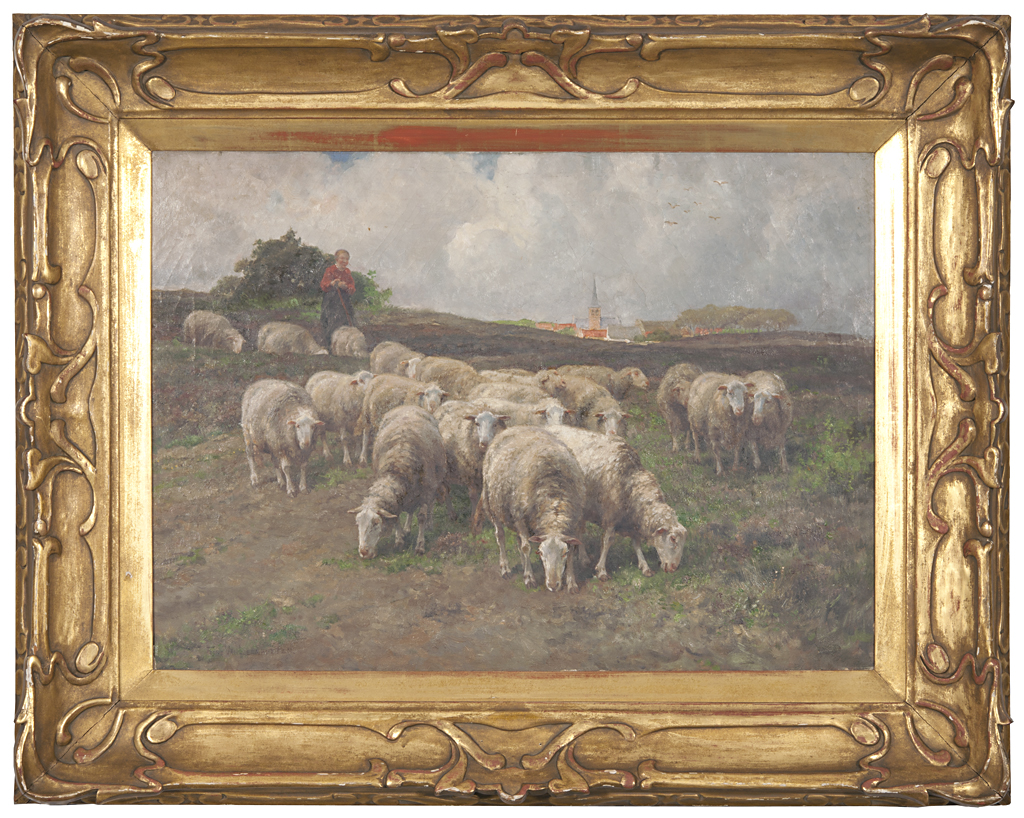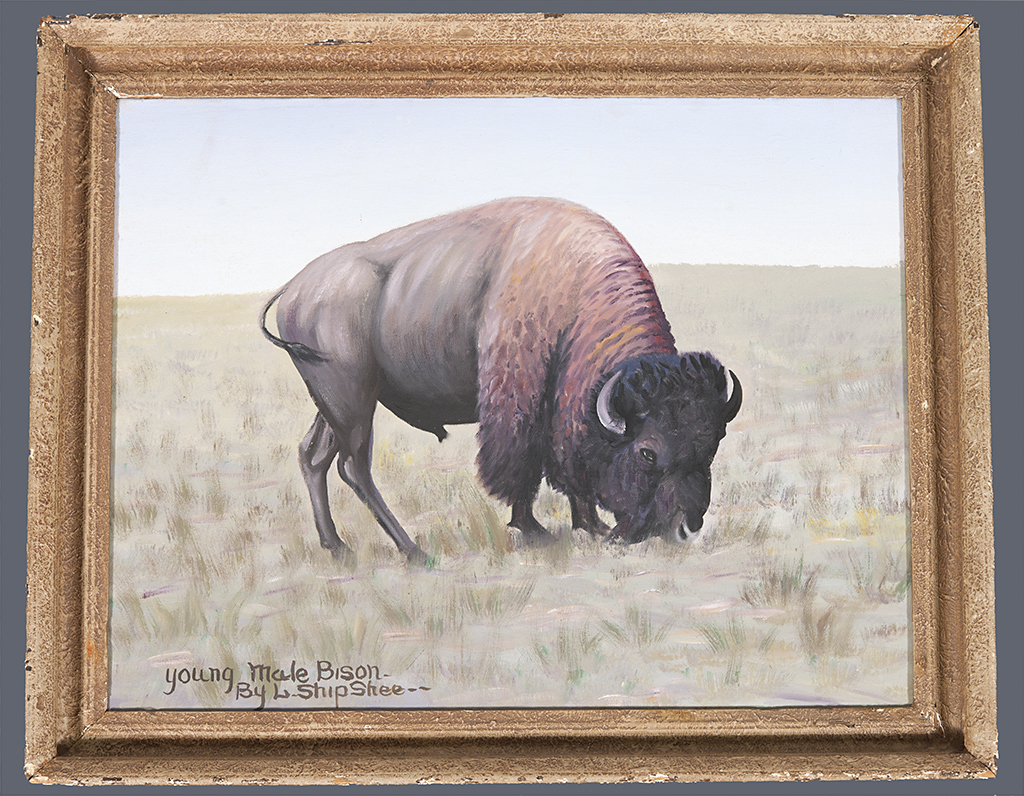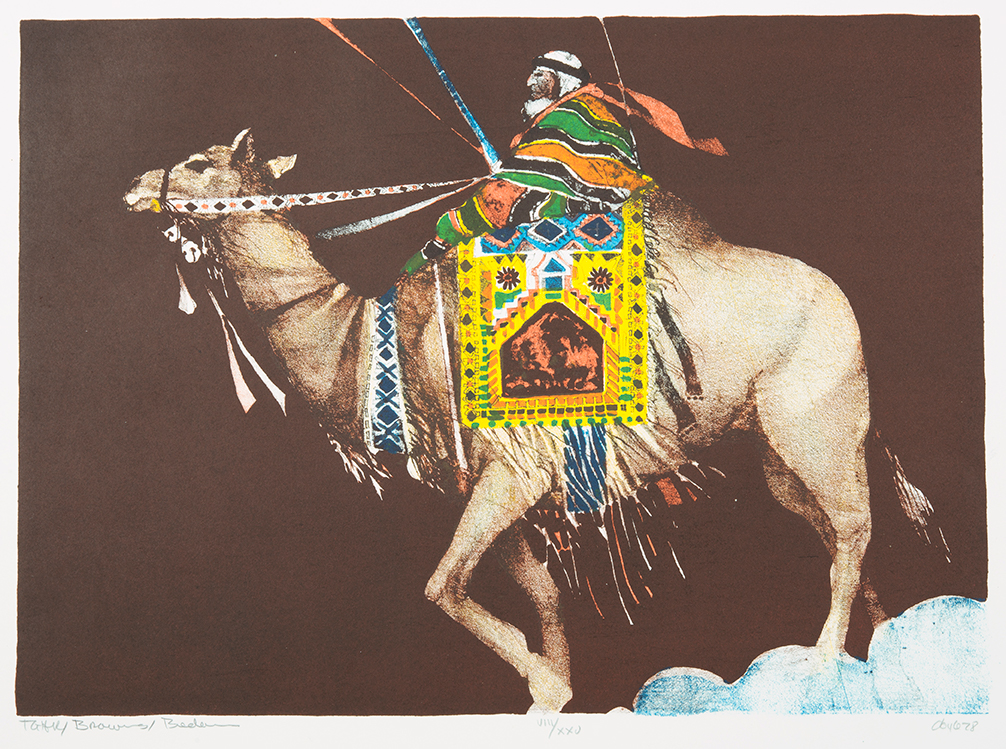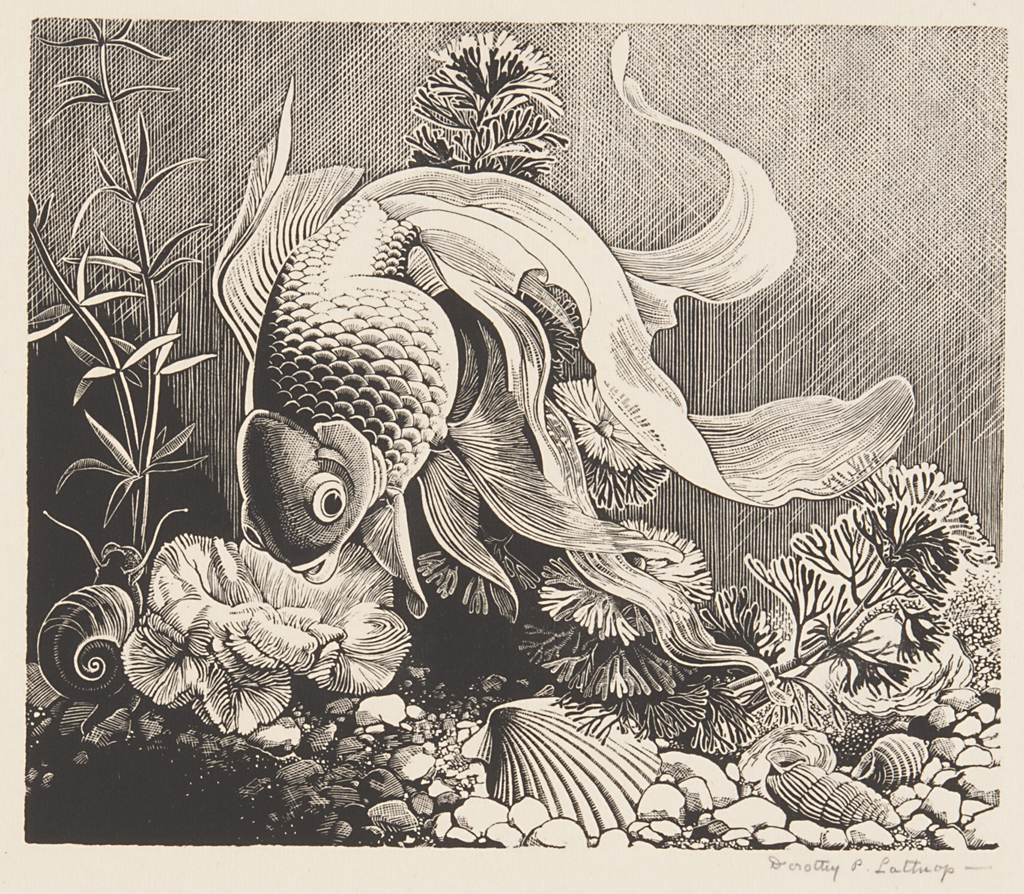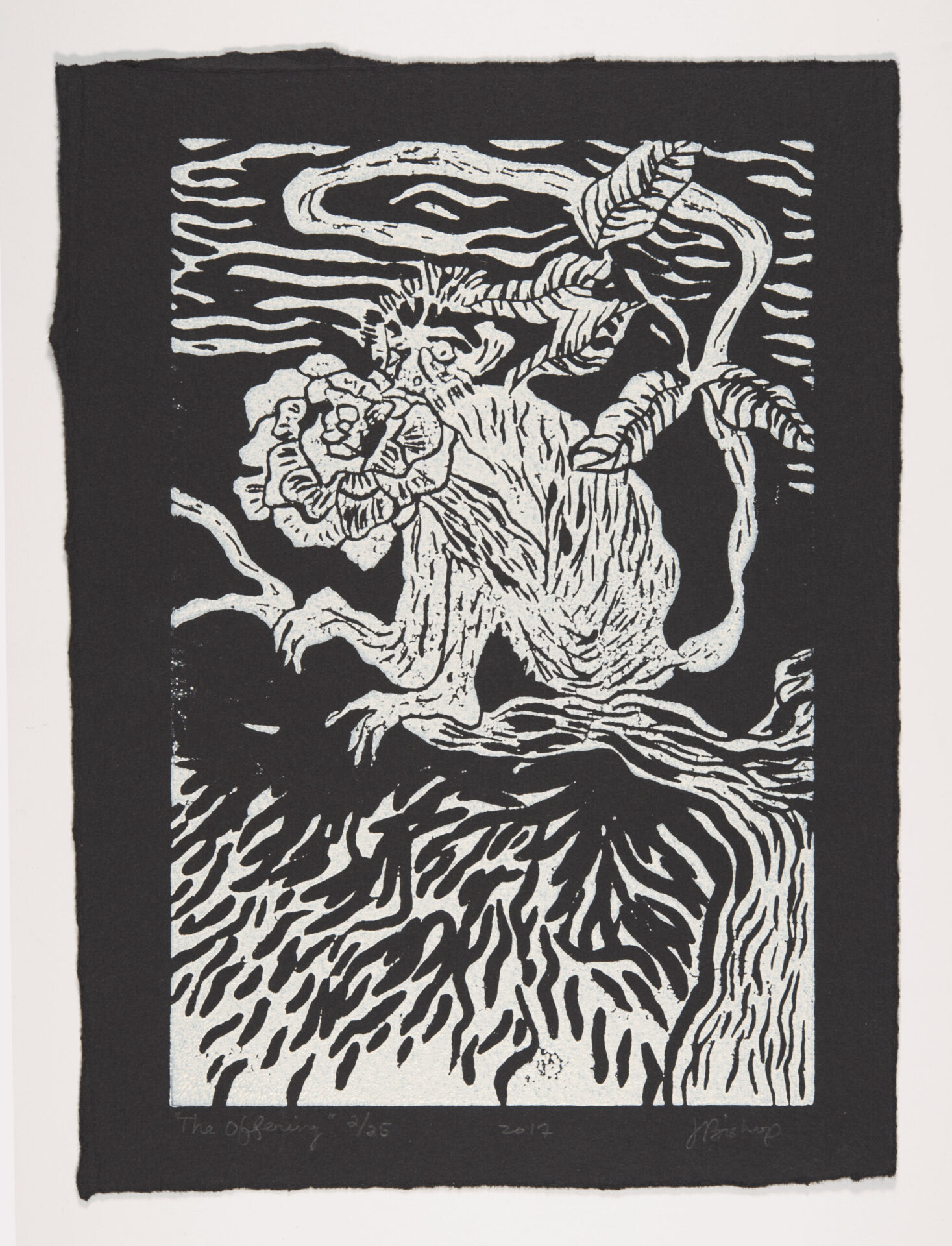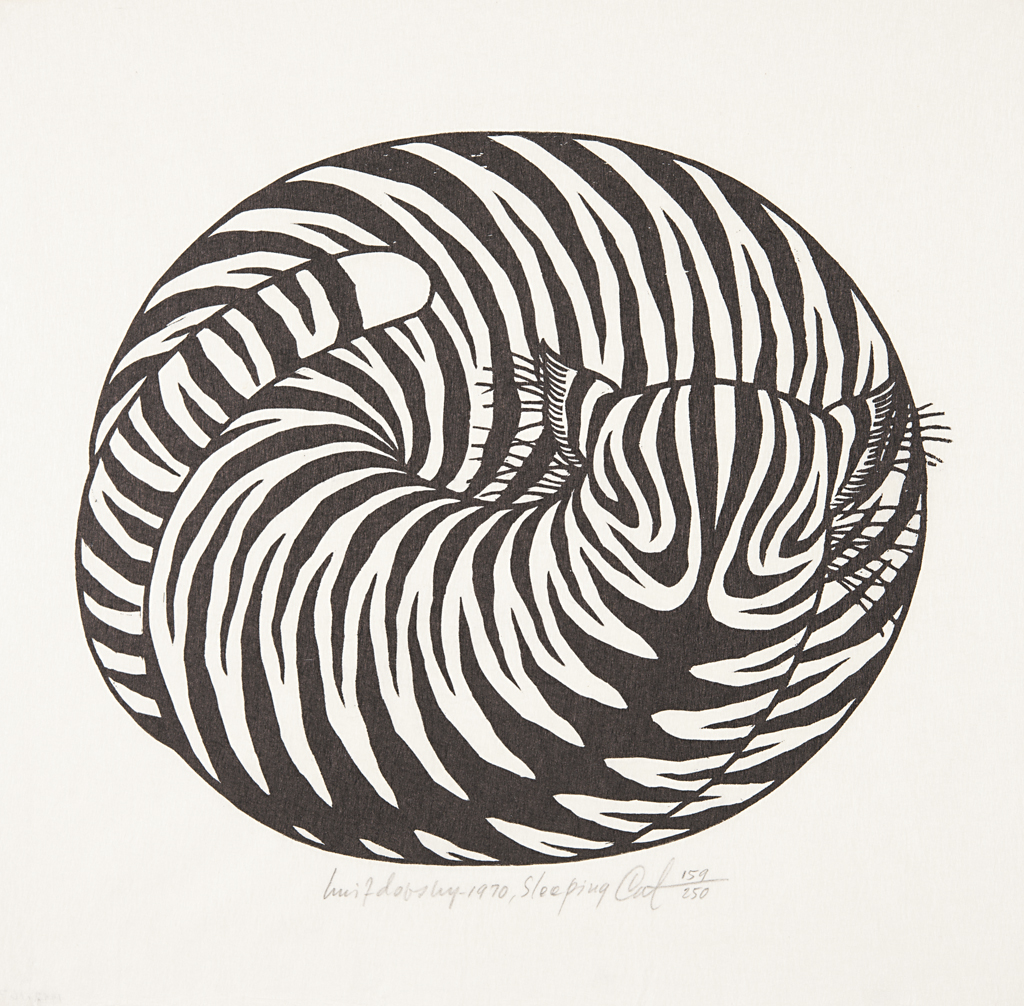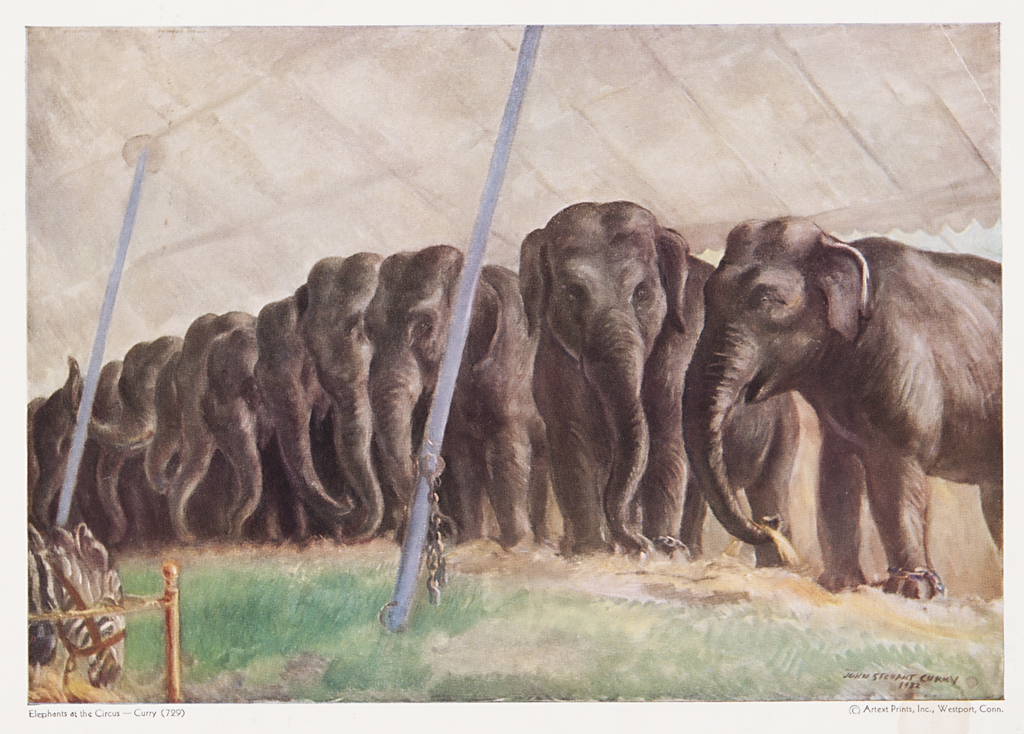Rose Chino Garcia
Born 1928, Acoma Pueblo, New Mexico
Died 2000, Acoma Pueblo, New Mexico
Duck effigy bowl, early 20th century
Earthenware with pigment
Gift of Mel and Mary Cottom, 2012.186
Garcia’s stylized duck is modeled on ancient ceremonial effigy vessels that feature human, animal, or zoomorphic (mixed) shapes. Effigy bowls were ceremonial and often used to hold burial goods. Garcia’s is decorated with a geometric black on white design inspired by the pottery of the Mimbres, ancestors of the Acoma. The duck has varied associations among Pueblo peoples. “Pawick” is the Hopi Duck Katsina, one of many spirits representing natural aspects of the real world. In Zuni beliefs, the duck is a fetish for the spirits of those who have passed on, making its image appropriate for a bowl used as part of a burial ceremony.
John Frederick Helm, Jr.
Born 1900, Syracuse, New York
Died 1972, Manhattan, Kansas
Mallard, ca. 1939
Aquatint with drypoint
Gift of Mary Brownell Helm, 1985.115
The Mallard (Anas platyrhynchos) is the ancestor of nearly all domestic ducks and is found almost everywhere. Like many “dabbling ducks” that feed on the water’s surface, its body is long and its tail rides high out of the water. Helm’s realistic depiction of a male Mallard lacks color, but the breed’s distinctive markings are evident: Males have a dark, iridescent-green head and bright yellow bill, and a gray body sandwiched between a brown breast and black rear. The bodies of females and juveniles are mottled brown with orange-brown bills. Both sexes have an iridescent blue “speculum” patch of color on the wing.




